Here is a quote from this site:
...higher 'transconductance' - a measure of the performance of a transistor - than silicon transistors. The higher the transconductance, the faster the transistor can switch on and off. That means higher clock frequencies can be supported, and that lower core voltages are necessary.
The above bold marked argument shows up in Oxford dictionary under the example sentences as well: https://en.oxforddictionaries.com/definition/transconductance :
‘The higher the transconductance, the faster the transistor can switch on and off.’
I know that the transconductance is the slope of Iout Vin curve. The steeper the curve the higher the transconductance of the transistor. But that curve doesn't have any time axis. It seems ∆Iout/∆Vin is about DC increments doesn't have anything related with time. Or does it? How is being faster switch can be related to higher transconductance?
There is no time in the below plot(Ic Vbe are DC values since they are capital letters, they are not instantaneous):
